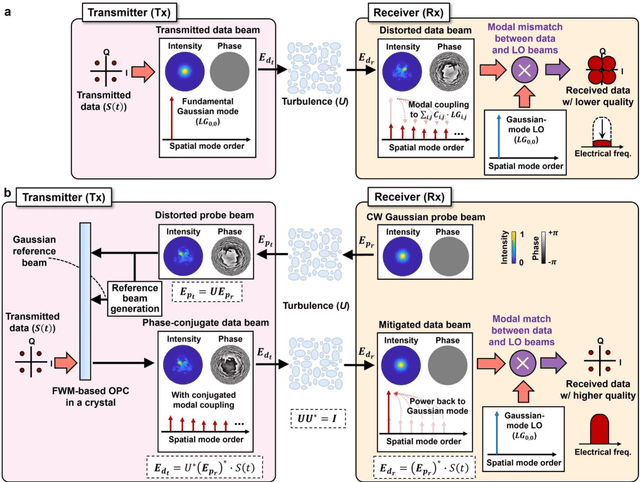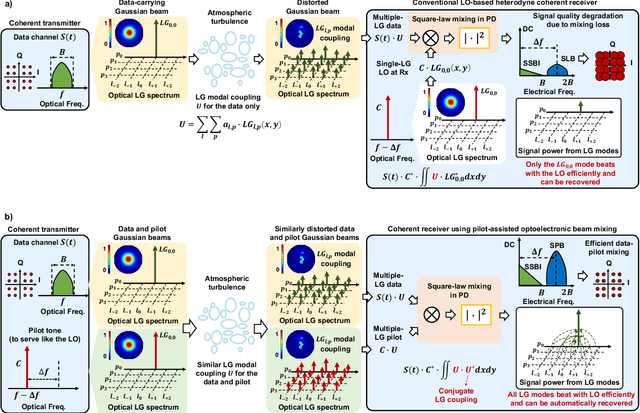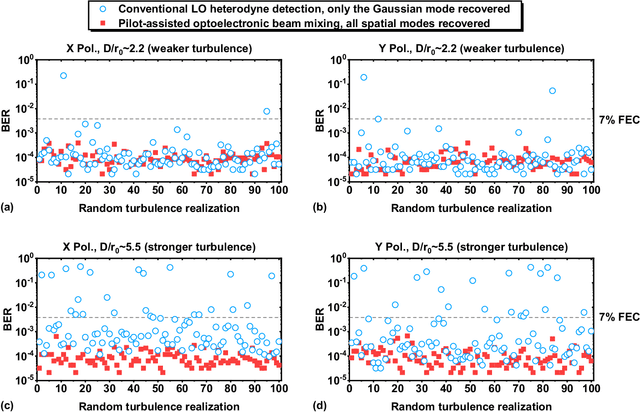Huibin Zhou
GNN-enabled Precoding for Massive MIMO LEO Satellite Communications
May 06, 2025Abstract:Low Earth Orbit (LEO) satellite communication is a critical component in the development of sixth generation (6G) networks. The integration of massive multiple-input multiple-output (MIMO) technology is being actively explored to enhance the performance of LEO satellite communications. However, the limited power of LEO satellites poses a significant challenge in improving communication energy efficiency (EE) under constrained power conditions. Artificial intelligence (AI) methods are increasingly recognized as promising solutions for optimizing energy consumption while enhancing system performance, thus enabling more efficient and sustainable communications. This paper proposes approaches to address the challenges associated with precoding in massive MIMO LEO satellite communications. First, we introduce an end-to-end graph neural network (GNN) framework that effectively reduces the computational complexity of traditional precoding methods. Next, we introduce a deep unfolding of the Dinkelbach algorithm and the weighted minimum mean square error (WMMSE) approach to achieve enhanced EE, transforming iterative optimization processes into a structured neural network, thereby improving convergence speed and computational efficiency. Furthermore, we incorporate the Taylor expansion method to approximate matrix inversion within the GNN, enhancing both the interpretability and performance of the proposed method. Numerical experiments demonstrate the validity of our proposed method in terms of complexity and robustness, achieving significant improvements over state-of-the-art methods.
GDM4MMIMO: Generative Diffusion Models for Massive MIMO Communications
Dec 24, 2024


Abstract:Massive multiple-input multiple-output (MIMO) offers significant advantages in spectral and energy efficiencies, positioning it as a cornerstone technology of fifth-generation (5G) wireless communication systems and a promising solution for the burgeoning data demands anticipated in sixth-generation (6G) networks. In recent years, with the continuous advancement of artificial intelligence (AI), a multitude of task-oriented generative foundation models (GFMs) have emerged, achieving remarkable performance in various fields such as computer vision (CV), natural language processing (NLP), and autonomous driving. As a pioneering force, these models are driving the paradigm shift in AI towards generative AI (GenAI). Among them, the generative diffusion model (GDM), as one of state-of-the-art families of generative models, demonstrates an exceptional capability to learn implicit prior knowledge and robust generalization capabilities, thereby enhancing its versatility and effectiveness across diverse applications. In this paper, we delve into the potential applications of GDM in massive MIMO communications. Specifically, we first provide an overview of massive MIMO communication, the framework of GFMs, and the working mechanism of GDM. Following this, we discuss recent research advancements in the field and present a case study of near-field channel estimation based on GDM, demonstrating its promising potential for facilitating efficient ultra-dimensional channel statement information (CSI) acquisition in the context of massive MIMO communications. Finally, we highlight several pressing challenges in future mobile communications and identify promising research directions surrounding GDM.
Automatic Mitigation of Dynamic Atmospheric Turbulence Using Optical Phase Conjugation for Coherent Free-Space Optical Communications
Aug 17, 2024



Abstract:Coherent detection can provide enhanced receiver sensitivity and spectral efficiency in free-space optical (FSO) communications. However, turbulence can cause modal power coupling effects on a Gaussian data beam and significantly degrade the mixing efficiency between the data beam and a Gaussian local oscillator (LO) in the coherent detector. Optical phase conjugation (OPC) in a photorefractive crystal can "automatically" mitigate turbulence by: (a) recording a back-propagated turbulence-distorted probe beam, and (b) creating a phase-conjugate beam that has the inverse phase distortion of the medium as the transmitted data beam. However, previously reported crystal-based OPC approaches for FSO links have demonstrated either: (i) a relatively fast response time of 35 ms but at a relatively low data rate (e.g., <1 Mbit/s), or (ii) a relatively high data rate of 2-Gbit/s but at a slow response time (e.g., >60 s). Here, we report an OPC approach for the automatic mitigation of dynamic turbulence that enables both a high data rate (8 Gbit/s) data beam and a rapid (<5 ms) response time. For a similar data rate, this represents a 10,000-fold faster response time than previous reports, thereby enabling mitigation for dynamic effects. In our approach, the transmitted pre-distorted phase-conjugate data beam is generated by four-wave mixing in a GaAs crystal of three input beams: a turbulence-distorted probe beam, a Gaussian reference beam regenerated from the probe beam, and a Gaussian data beam carrying a high-speed data channel. We experimentally demonstrate our approach in an 8-Gbit/s quadrature-phase-shift-keying coherent FSO link through emulated dynamic turbulence. Our results show ~10-dB improvement in the mixing efficiency of the LO with the data beam under dynamic turbulence with a bandwidth of up to ~260 Hz (Greenwood frequency).
Turbulence-Resilient Coherent Free-Space Optical Communications using Automatic Power-Efficient Pilot-Assisted Optoelectronic Beam Mixing of Many Modes
Jan 25, 2021



Abstract:Atmospheric turbulence generally limits free-space optical (FSO) communications, and this problem is severely exacerbated when implementing highly sensitive and spectrally efficient coherent detection. Specifically, turbulence induces power coupling from the transmitted Gaussian mode to higher-order Laguerre-Gaussian (LG) modes, resulting in a significant decrease of the power that mixes with a single-mode local oscillator (LO). Instead, we transmit a frequency-offset Gaussian pilot tone along with the data signal, such that both experience similar turbulence and modal power coupling. Subsequently, the photodetector (PD) optoelectronically mixes all corresponding pairs of the beams' modes. During mixing, a conjugate of the turbulence experienced by the pilot tone is automatically generated and compensates the turbulence experienced by the data, and nearly all orders of the same corresponding modes efficiently mix. We demonstrate a 12-Gbit/s 16-quadrature-amplitude-modulation (16-QAM) polarization-multiplexed (PolM) FSO link that exhibits resilience to emulated turbulence. Experimental results for turbulence D/r_0~5.5 show up to ~20 dB reduction in the mixing power loss over a conventional coherent receiver. Therefore, our approach automatically recovers nearly all the captured data power to enable high-performance coherent FSO systems.
 Add to Chrome
Add to Chrome Add to Firefox
Add to Firefox Add to Edge
Add to Edge